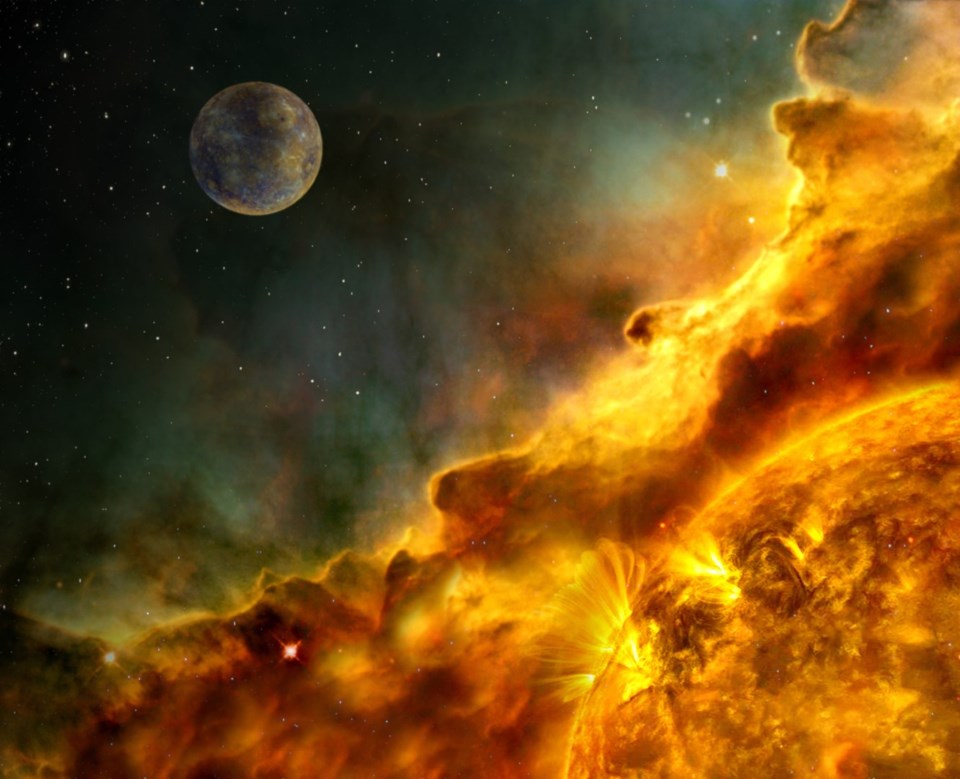THE CONVERSATION — What do you feel when you see the aurora?
Otherwise known as the northern or southern lights, an aurora is light emitted by upper atmospheric particles as they interact with energized ones .
It’s an awe-inspiring and otherworldly event that those living at high latitudes can experience often. In , the northern lights are ancestral spirits who remain and communicate from the sky.
To scientists, the aurora is an infinitely complex amalgamation of dynamics, a manifestation of Earth’s intrinsic connection to the sun. To industry, it’s a risk factor.
The Starlink destruction event
In February 2022, . This was the 36th Starlink launch that SpaceX had carried out, and one that they anticipated to go off without a hitch, just like the 35 before.
On launch day, a — a large burst of plasma expelled from the sun — struck Earth. It caused a geomagnetic storm in the atmosphere between around 100 and 500 kilometres in altitude, the target range for Starlink.
This event injected an immense amount of electromagnetic energy straight into Earth’s upper atmosphere. It produced , but the energy also increased the density of the air. A higher air density typically isn’t a big deal for LEO satellites, because it’s already extremely low at usual operational altitudes (upwards of 400 kilometres).
Starlink, however, was initially . That’s much closer to Earth, with an exponentially higher air density. Thirty-eight out of those 49 initial launch satellites were subsequently lost due to atmospheric drag from the dense atmosphere, .
Surprising solar cycle
The sun undergoes a cycle — an 11-year one, to be exact — from which its activity increases and decreases periodically. At the peak of a cycle, we see more sunspots on the solar surface, more radiation emitted, and more solar flares. Geomagnetic storms like the one that caused the Starlink destruction event are a relatively common occurrence, especially when the sun reaches the peak of its 11-year cycle of strengthening and weakening activity.
In the previous cycle, which ended in 2019 (the 24th tracked cycle since 1755), — an average of one every five or so days.
We’re currently four years into solar cycle 25, but this one has already proven surprising. The maximum activity of the 25th cycle was predicted to occur in 2025, but solar activity has already exceeded that. This means we’ve been seeing more geomagnetic storms, more auroral displays (and at lower latitudes than usual) and, potentially, more hazardous conditions for LEO satellites.
Solar activity as the number of sunspots visible on the solar surface. The number of sunspots seen is already considerably higher than what is expected from the solar maximum, two years ahead of schedule.
Space weather — the unseen force of nature
If geomagnetic storms are so common, why don’t they cause more issues? , but the consequences are much less obvious than satellites burning up in the atmosphere.
When space weather energy enters Earth’s upper atmosphere, for example, the ionospheric composition changes in addition to the air getting denser. High-frequency, or “shortwave,” radio communication depends on a predictable ionosphere to broadcast long distances.
Geomagnetic storms that affect ionospheric composition can cause , such as a . Even minor storms can cause the degradation of radio signals used in military and maritime systems, aviation communication or ham radio.
Extreme storms can cause radio blackouts lasting hours, and for an entire side of the globe. Storms that big can also cause more discernible problems, such as the nine-hour .
Space weather warning systems
It’s not all doom and disintegrating rockets, however. We can detect when a solar flare leaves the surface of the sun and predict roughly when it will affect the Earth, giving forewarning to certain types of storms and .
For many storms however, there is very little or no predictive capability because it depends on how the Earth’s magnetic field interacts with the solar wind, which is harder to see.
Nowcasting — using real-time data to understand conditions as they occur — is one of our best tools. With instruments such as ground-based radar and magnetometers on satellites, .
As for why SpaceX lost satellites in February 2022 during a minor geomagnetic storm, that was just a matter of timing. The loss of the satellites, however, is a stunning reminder of the power of the universe we live in.
is a postdoctoral fellow in Space Physics at the University of Saskatchewan. Billett receives funding from the European Space Agency and the Natural Sciences and Engineering Research Council of Canada.
You can no longer count on social media to deliver important news to you. Keep your news a touch away by bookmarking SASKTODAY.ca's homepage at this link.
Here's why you should bookmark your favourites.




